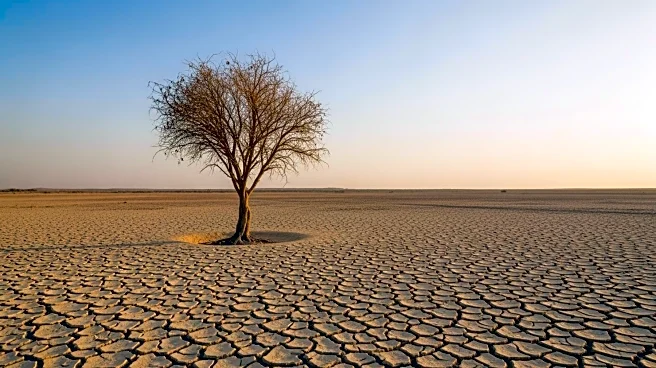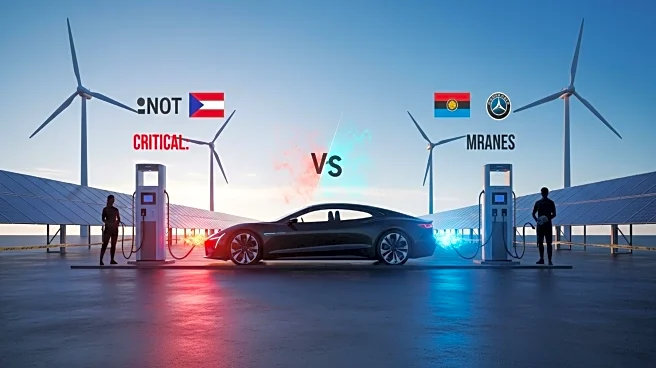What's Happening?
The Alberta government is taking significant steps to expedite the reclamation of oil sands tailings ponds by setting standards for the treatment and release of mine water into the environment. This initiative aims to address the challenge of managing over 1.3 trillion liters of water stored in these ponds. The Oil Sands Mine Water Steering Committee, which includes industry representatives and Indigenous leaders, has proposed nine recommendations to improve mine water management. The Mining Association of Canada supports these efforts, citing decades of research that demonstrate the feasibility of safely treating and releasing mine water. The initiative is expected to reduce land disturbance and accelerate reclamation processes.
Why It's Important?
The move to treat and release oil sands mine water is crucial for environmental management and the sustainability of mining operations. By reducing the need to store large volumes of mine water, Alberta can minimize land disturbance and enhance reclamation efforts, restoring the land to its natural state. This initiative also aligns with broader environmental goals and could lead to significant investments in water treatment technologies. The safe release of treated mine water is already practiced in other mining sectors, and extending this to oil sands could set a precedent for sustainable resource management.
What's Next?
Alberta plans to evaluate the recommendations from the Oil Sands Mine Water Steering Committee to determine practical implementation strategies. The province is working with industry, Indigenous communities, and scientists to ensure the safe return of treated water. The federal government is also expected to play a role in developing regulations that support these efforts. The successful implementation of these standards could unlock further investments in reclamation and water treatment technologies, potentially transforming the oil sands sector.
Beyond the Headlines
The initiative to treat and release oil sands mine water touches on ethical and cultural dimensions, particularly concerning Indigenous rights and environmental stewardship. By involving Indigenous communities in the decision-making process, Alberta is acknowledging the importance of protecting traditional lands and resources. This collaborative approach could serve as a model for other regions facing similar environmental challenges.











